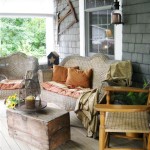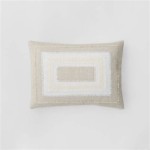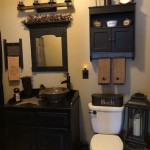How to Decorate a Rustic Bedroom
The rustic bedroom aesthetic evokes feelings of warmth, comfort, and a connection to nature. It emphasizes natural materials, textures, and a sense of history, creating a space that is both inviting and relaxing. Achieving a rustic bedroom requires careful consideration of color palettes, furniture choices, textiles, and decorative elements. The following guide outlines fundamental aspects involved in crafting a rustic bedroom retreat.
Color Palette and Wall Treatments
The foundation of any bedroom design lies in its color palette. For a rustic bedroom, colors inspired by the natural world are ideal. Earthy tones such as browns, beiges, greens, and grays should be prioritized. These colors can be incorporated into the walls, bedding, and accessories. Consider the depth and undertones of these colors to create a cohesive and balanced aesthetic. Using a limited range of colors prevents the space from feeling overwhelming and maintains a serene atmosphere.
When choosing wall treatments, explore options beyond simply painting. Textured walls can greatly enhance the rustic feel of the room. Consider using wood paneling, shiplap, or even exposed brick. These materials introduce visual interest and a sense of history to the space. If opting for paint, consider using matte or eggshell finishes to avoid excessive shine and maintain a natural look. Another option is to use whitewashed or distressed paint techniques to add character and a weathered appearance.
Wallpaper featuring natural patterns, such as wood grain, leaves, or subtle geometric designs inspired by nature, can also add a rustic touch. Ensure the wallpaper's color palette complements the overall scheme of the room. When incorporating multiple wall treatments, maintain a consistent design principle to ensure visual harmony. For instance, pair a shiplap accent wall with painted walls in a complementary color.
Furniture Selection and Placement
Furniture is a crucial element in defining the rustic aesthetic. Opt for pieces made from natural materials such as wood, leather, and metal. Distressed or reclaimed wood furniture adds character and a sense of history. Avoid furniture pieces with overly modern or sleek designs. Choose pieces with simple, sturdy construction and visible wood grain. A solid wood bed frame, a rustic dresser, and a comfortable armchair are essential components.
The bed is often the focal point of the bedroom, so selecting the right bed frame is critical. Consider a bed frame made from reclaimed wood, a metal frame with a vintage finish, or even a four-poster bed with a rustic design. Ensure the bed frame is appropriately sized for the room. Avoid oversized beds that can overwhelm a small space. The mattress should be comfortable and supportive, contributing to the overall sense of relaxation.
In addition to the bed, include other functional furniture pieces such as a dresser, nightstands, and a seating area. The dresser should provide ample storage space for clothing and personal items. Choose nightstands that complement the bed frame and provide space for lamps, books, and other bedside essentials. A comfortable armchair or bench placed in a corner of the room can create a cozy reading nook. When arranging the furniture, consider the flow of the room and ensure there is ample space to move around comfortably.
Placement of furniture should promote a sense of balance and harmony. The bed should ideally be positioned against a wall, providing a sense of security and stability. Nightstands should be placed on either side of the bed, creating a symmetrical arrangement. The dresser should be positioned against a wall that allows easy access to its drawers. Arrange the seating area to maximize natural light and create a relaxing space. Avoid overcrowding the room with furniture, as this can detract from the sense of tranquility and space.
Textiles, Linens, and Decorative Elements
Textiles and linens play a significant role in creating a cozy and inviting rustic bedroom. Opt for natural fabrics such as cotton, linen, wool, and burlap. These fabrics add texture and warmth to the space. Choose bedding in earthy tones or with subtle patterns inspired by nature. Layering different textures and patterns can add visual interest and depth to the room. A knitted throw blanket draped over the bed or armchair can add a touch of comfort and style. Consider incorporating decorative pillows in various shapes and sizes, using fabrics with different textures and patterns.
Window treatments are another important element to consider. Use natural materials such as linen or burlap for curtains or blinds. These materials allow natural light to filter into the room while providing privacy. Avoid heavy, ornate curtains that can detract from the rustic aesthetic. Simple, understated window treatments are ideal for a rustic bedroom.
Decorative elements are essential for adding personality and character to the room. Incorporate items that reflect your personal interests or have sentimental value. Consider using vintage or antique items to add a sense of history. Wood carvings, metal sculptures, and natural elements such as stones, shells, or branches can enhance the rustic feel of the room. Displaying artwork featuring landscapes, wildlife, or other natural subjects can also contribute to the overall aesthetic.
Lighting is also important for creating the right atmosphere. Use warm, soft lighting to create a relaxing and inviting space. Consider using lamps with rustic bases, such as wood or metal. String lights can also add a touch of whimsy and romance to the room. Avoid harsh, bright lighting that can detract from the sense of tranquility. Candles can also be used to create a warm and inviting ambiance. Place candles in safe locations, away from flammable materials.
Rugs can add warmth, texture, and visual interest to the room. Opt for rugs made from natural materials such as wool, jute, or sisal. Choose rugs with simple patterns or textures that complement the overall aesthetic of the room. A large area rug can anchor the bed and create a focal point. Smaller rugs can be placed in other areas of the room, such as in front of the dresser or armchair.
Plants can bring life and freshness to the room. Incorporate potted plants in various sizes and shapes. Choose plants that thrive in indoor environments and require minimal maintenance. Consider using rustic planters made from terracotta, wood, or metal. Plants can be placed on windowsills, nightstands, or on the floor. Artificial plants can also be used, but ensure that they are of high quality and look realistic.
By carefully considering these elements, a rustic bedroom can be transformed into a sanctuary that promotes relaxation, comfort, and a deeper connection to the natural world. The key is to prioritize natural materials, textures, and a sense of history, creating a space that is both inviting and aesthetically pleasing.

14 Rustic Bedroom Ideas Decorating Tips For Bedrooms

23 Rustic Bedroom Ideas Decorating

14 Rustic Bedroom Ideas Decorating Tips For Bedrooms

26 Best Rustic Bedroom Decor Ideas And Designs For 2025

Pin On New House Decor

23 Rustic Bedroom Ideas Decorating

Inspiring Rustic Bedroom Ideas To Decorate With Style Decoist
:max_bytes(150000):strip_icc()/Snapinsta.app_347354029_283868900735124_7625638317882858416_n_1080-a882835a69e048ff88cc3fe5254f22cd.jpg?strip=all)
45 Rustic Decorating Ideas To Add Charm And Character

15 Cozy Rustic Bedroom Decor Ideas Shelterness

65 Cozy Rustic Bedroom Design Ideas Digsdigs
Related Posts







